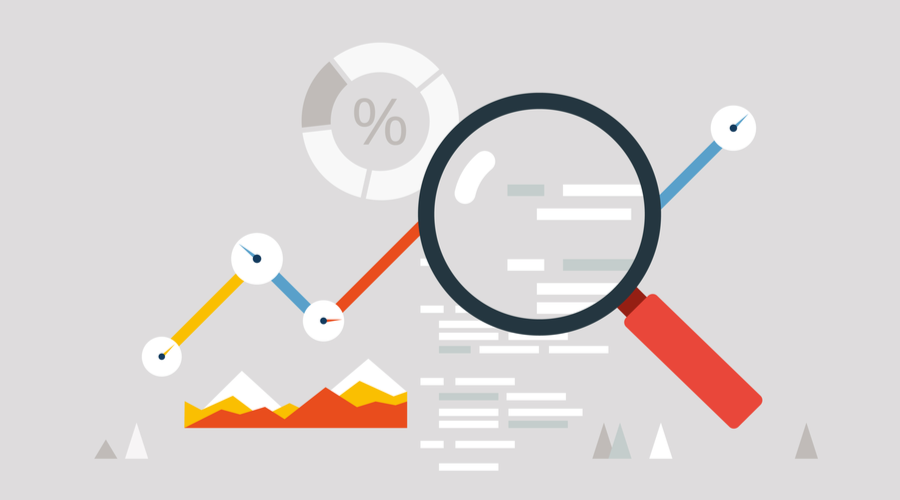As a pharmacy owner, your primary goal is to improve patient outcomes — to be a healthcare provider. But you’re also a business, and the only way to help your patients is to make money. On average, it can take a small business two to three years to become profitable. Any longer than that, the business likely won’t survive.
The exact point at which your pharmacy goes from losing money to making a profit is known as the “break-even point,” and it’s a crucial metric to help you stay in business for the long-term.
Simply put, the break-even point for your pharmacy is when your expenses and revenue are equal. If you never break even, eventually you won’t be able to pay your bills. But once you pass the break-even point, you become a profitable business.
Calculating your break-even point
To find what the break-even point is for your pharmacy, start with this formula:
Break-even Point = Fixed Costs / Contribution Margin
The result will be the amount of sales in dollars you have to make before you start to see a profit. To get to that number, you’ll need to know your fixed costs and contribution margin.
Here’s a breakdown of each element of the formula.
Fixed costs
A fixed cost is a cost that will never change, regardless of your output and sales.
Examples of fixed costs include:
- Rent or mortgage payments
- Payroll
- Insurance
- Property taxes
- Equipment
- Depreciation
- Certain utilities
- Loan payments
You will most likely be able to find your fixed costs by looking at your income statement.
Contribution margin
The other piece of information you’ll need to identify your break-even point is your contribution margin. This is a common metric for finance folks, but it’s often overlooked by business owners and managers.
The contribution margin is another way to look at your profit. It helps you determine how much money is being generated from the sales you make at the pharmacy after you account for the variable costs you incurred making the sales.
To find your contribution margin, you’re going to have to use another formula:
Contribution Margin = Revenue – Variable Costs
Like your fixed costs, you should be able to find both your revenue information and variable costs on your pharmacy’s income statement.
- Revenue: Use the sales figures from your income statement to determine your revenue, and include any income you have made from capital gains as well.
- Variable costs: These are costs that change from month to month and are dependent on output. The more you sell, the higher your variable costs will be. These include costs like credit card transaction fees, shipping expenses, packaging, and utilities like gas or electricity.
Applying the break-even point to your business
Once you know how to calculate your break-even point, it can become a valuable tool for making decisions about your pharmacy’s spending, pricing, and future business goals.
These are a few applications for a break-even analysis you can use to make smarter calls about your business.
Set revenue goals
By completing a break-even analysis, you’ll know exactly how much revenue you need to bring in in order to be considered profitable.
Use this information to set a concrete sales goal for your company. Having that break-even amount as a target helps you keep track of exactly where you need to be sales-wise in order to keep your pharmacy going.
The break-even number should be a minimum target. You can also set “stretch goals” for further profitability so you have enough to reinvest in your business.
Change pricing
If your break-even point feels out of reach, one option you have is increasing your prices to bring breaking even closer to reality. By raising prices, you reduce the number of sales you need to make before you break even.
In a highly competitive market, it can be hard to raise prices on your patients, but remember, if you’re not bringing in enough revenue to break even, you won’t be able to stay in business in the long term.
Even a relatively small increase in prices can get you closer to the break-even point.
Adjust costs
The other option for improving your break-even outlook is reducing your expenses. Both fixed and variable costs are targets for reduction.
While “fixed” is in the title, you can probably find ways to whittle down these costs. If you rent your space, you can negotiate a lower payment. Or, you can take a look at your scheduling practices to reduce your payroll costs.
Variable costs may be a better target for reducing costs. You can switch energy efficient options to decrease your utility costs. You can also approach your suppliers to negotiate more favorable payment terms or switch to a new point-of-sale to help reduce credit card transactions fees.
Reducing your inventory costs is the most effective way to reach your break-even point, particularly in the pharmacy industry where you have no control over prescription prices. One way to do that is to use a secondary supplier with consistently low prices. The NAPB-accredited distributor BuyLine® offers a full line of brand, generic, and OTC products at the lowest prices in the secondary market. In addition to having low list prices, BuyLine also rewards purchases with cash rebates and significant discounts on brands. Earn up to an additional 10% cash rebate on generics and up to WAC -4% on brand.
The most effective way is to join a buying group, which can negotiate a cost of goods with a primary wholesaler impossible for individual pharmacies to get on their own. With ProfitGuard®, members have reported annual savings between $70,800 and $212,400 on average.
RELATED: How One Pharmacies Saves Thousands on Its Costs of Goods
Make decisions about future investments
When you want to make a change in your pharmacy, that’s a good time to pull out a break-even analysis — especially if that change will increase your expenses.
If you want to purchase a new piece of equipment or remodel to modernize your space, take the cost of that improvement and incorporate it into your break-even analysis. The formula will show you how much you will need to make to break even on your new investment.
The result will help you determine if your intended investment is a realistic expense for your pharmacy or if it will actually negatively affect your profitability.
Find funding
If you are looking for additional funding for your business, a break-even analysis will be a necessity. The break-even analysis should show funders that your pharmacy has a viable path to profitability.
Investors will want to see this information because they will only make a return on their investment if your pharmacy makes money.
Banks and other lenders want to see this information because it lets them know if you are going to be able to pay back your loan.
Applying the break-even point to pricing
The break-even point should be used to find the sweet spot in your product and service pricing. And it can be especially useful when determining your discounts and promotions. The break-even point determines the volume you need to get back to even financially. At break-even, it’s a wash. Above that, it’s a win. As a general rule, the higher the margin, the less volume you need. The lower margin, the more volume you need.
Use this formula to master your promotion pricing:
-%change in price/(%change in price + %gross margin) = %volume increase to break even
Let’s say you have a product with a margin of 50% and you want to offer a discount of 10%.
– (-10)/(-10+50) = +25
In this case, you need a volume increase of at least 25% to break even. If the discount doesn’t achieve that, you have lost money. Anything above that, you’ve gained money.
A Member-Owned Company Serving Independent Pharmacies
PBA Health is dedicated to helping independent pharmacies reach their full potential on the buy-side of their business. Founded and run by pharmacists, PBA Health serves independent pharmacies with group purchasing services, wholesaler contract negotiations, proprietary purchasing tools, and more.
An HDA member, PBA Health operates its own NABP-accredited warehouse with more than 6,000 SKUs, including brands, generics, narcotics CII-CV, cold-storage products, and over-the-counter (OTC) products — offering the lowest prices in the secondary market.












